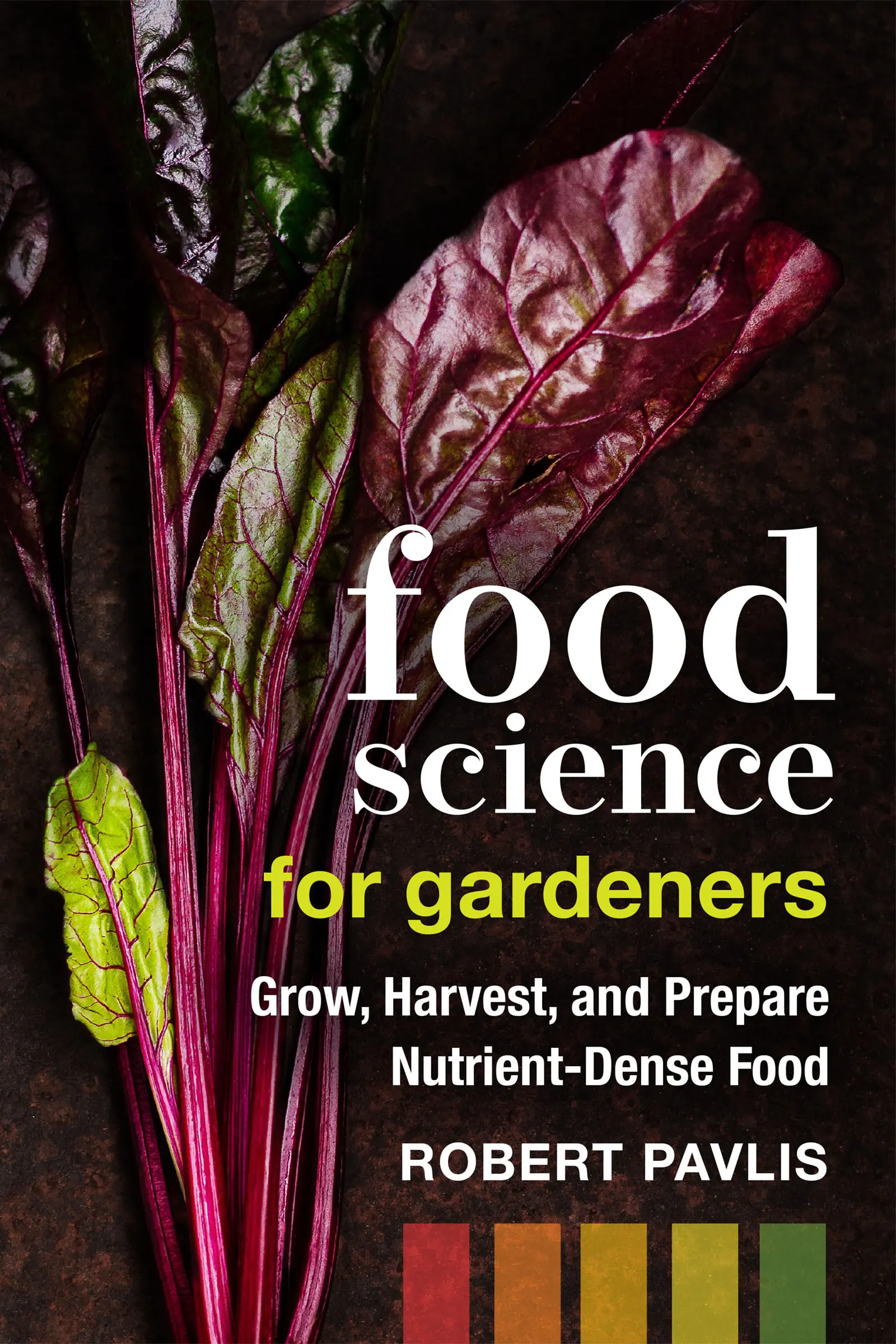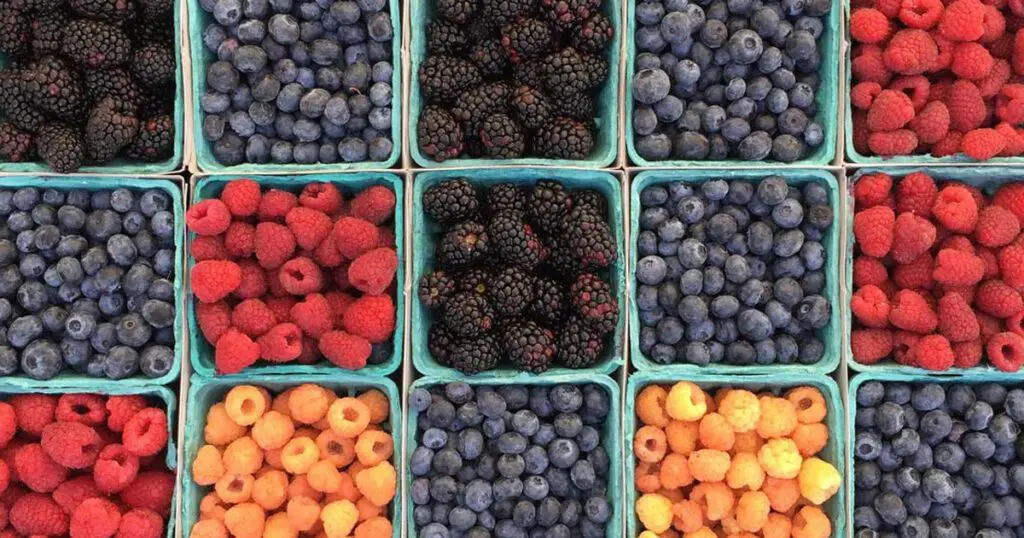
The popularity of organic food continues to grow, with many believing it’s the healthier choice because it’s chemical-free. But the science doesn’t always back that up! Although most western countries have clear restrictions on the use of “organic” in food labeling, it can be confusing as people use the term for anything from backyard gardens to certified farms.
In this excerpt from Robert Pavlis’ Food Science for Gardeners, Pavlis clarifies what organic really means, addresses common myths, and explores the differences between local and larger-scale farming. By the end, you’ll have a clearer picture of how organic farming affects taste, nutrition, and sustainability, helping you make the best choices for you and your family.
From Chapter 7: Growing Great Food
Is Organic Food Better?
The marketing effort for organic food has been very strong, and the common drivers for it is that it is grown with no chemicals, making it safer and more nutritious. Scientific testing does not support these claims.
The term organic is used in a number of different ways. Many gardeners grow food without synthetic chemicals following a number of natural techniques, and they consider their food to be organic. There are also government-led organizations that provide “organic certification,” and food that is stamped certified organic has been grown following these regulations. It is important to understand that each country has their own certification standards, although the basic premise of most countries is similar.

As a gardener you are free to define organic in any way you want, but for the purposes of this discussion I will use the term organic to refer to certified organic.
It is a common belief that certified organic food is grown without chemicals, but that is a myth. The process excludes many synthetic chemicals, although the definition of what is synthetic might surprise you. Some manufactured chemicals are considered synthetic and others are not. For example, copper sulfate is considered “organic” even though it is manufactured. The most common manufacturing method uses recycled copper metal scraps and adds sulfur, which is then purified into copper sulfate.
The chemicals which are allowed in organic farming are usually less effective, resulting in their use at much higher levels than synthetic chemicals. Several organic pesticides are more toxic than similar synthetic ones that are not allowed.
Organic farming does not allow the use of GMO seed.

Taste and Nutrition
Many people, including food experts like chefs and nutritional experts, think organic food tastes better because it is grown more naturally. They believe that the organic treatment of soil transfers extra flavor into the food. Cornell University offered pairs of food to volunteers, where one was marked organic and the other was not. In reality both were identical. Most volunteers rated the organic choice as better tasting than the one labeled nonorganic. Organic marketing has promoted this “halo effect,” and many consumers now believe it, but that does not make it true.
There have been numerous studies that compared the taste of organic and conventional food, and most of them found no significant difference. Taste has much more to do with freshness/ripeness and cultivar selection than how it is grown.
Organic food is grown with compost and manure, which add important ingredients to soil that synthetic fertilizer just can’t match. Organic gardening builds a healthy soil system full of microbes and fungi, all helping food become more nutritious—or so the story goes. In 2012, Stanford’s Center for Health Policy did a very comprehensive meta-analysis of existing studies comparing organic and conventional foods. They did not find strong evidence that organic foods are more nutritious than conventional alternatives.

Vitamin content was not higher. Phosphorus was significantly higher in organic food, but few people have a phosphorus deficiency in their diet, so this has little clinical value. Protein and fat contents were the same in both organic and conventional milk. A few studies did show a higher level of omega-3 fatty acids in organic food. One thing is clear. Fresh food is more nutritious than food that has sat around for a while, and this may be a bigger factor than how it is grown.
Chemical Exposure
A major concern of conventional food is the exposure to synthetic chemicals, including fertilizer, pesticides, and medication given to farm animals. There are very few studies that have actually looked at overall health and compared people eating mostly organic to those eating mostly conventional food.
A lack of chemistry knowledge leads people to think that synthetic fertilizer is somehow inferior to organic fertilizer like manure and compost, but there is no scientific basis for this. Both types of fertilizer must release nutrients in plant-available forms before plants can use them. Once in this form, both sources are identical as far as nutrients go. Neither one produces healthier food than the other.
The other important fact is that plants produce a vast number of natural pesticides—that is how they keep bugs from eating them. When you eat fruit or vegetables, 99.99 percent of the pesticides you consume are natural pesticides, and these are the same in both types of food. The remaining 0.01 percent are manufactured chemicals. It is true that conventional fruits and vegetables have a higher amount of synthetic pesticides on them, but the amounts are extremely small and well below any safety limits (see section on Chemical Toxicity).

Organically grown animals can’t be given antibiotics or growth hormones, and their feed can’t be exposed to pesticides, growth hormones, or synthetic fertilizer. Chickens and turkeys can be given antibiotics in the hatchery and on their first day of life. In Canada, organic dairy farmers are also permitted to give antibiotics when it’s medically necessary and natural treatments don’t work.
“Contrary to what you may think, the chances of you actually consuming antibiotics through animal foods is extremely low.” The United States, Canada, Australia, and the European Union have strict laws that prevent contaminated meat from entering the food chain. If an animal is given an antibiotic, it must go through a drug withdrawal period before it can be sold as food. Testing by the USDA in 2010 found less than 0.8 percent of animal food products to be positive for some form of contamination, including antibiotic residue, and these were removed from the food chain.
Even if there is some exposure to antibiotics, there is no evidence that they cause any health issues. The overuse of antibiotics in both animals and humans is a real and significant concern because they can lead to resistant strains of bacteria.
Buy From Local Farmers
I don’t see a good reason for buying certified organic food, but there is some value in buying from local farmers—if you trust them. These local farmers do not need to be certified, they just need to farm in an organic/sustainable way. I actually think that certification produces food that is “less organic” than some conventional farms. It is certainly less “organic” than the food I grow in my backyard. But you do have to get to know the farmer and understand how they grow things so you trust them.

Be careful with local markets. It is common for the sellers at such markets to sell food they don’t grow or sell imported food.
Is local food more sustainable? The answer is very complex. I live in Ontario, and we now grow a lot of fresh food under glass, and in winter that requires the use of a lot of energy. In some cases, it is more sustainable to import the food from a warm climate that uses much less energy to grow it.
Many people don’t like the idea of large multinational farms, but they generally produce food in a more sustainable way than small local growers because of the efficiencies that come from larger equipment. A recent study titled “The impact of farm size on agricultural sustainability” concluded that:
- increasing farm size shows clear benefits for environmental protection
- large-scale farming is a critical path for modernizing and sustaining agriculture
Transportation by air is generally more harmful to the environment than transportation by land, but even that is changing with more efficient airplanes. Transportation by sea has a very low environmental impact compared to other means.
In some cases, local is more sustainable, and a better option. We just have to be careful not to paint everything local as better.









